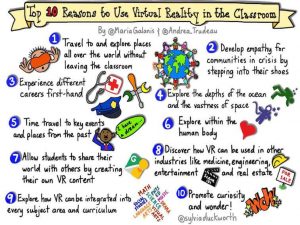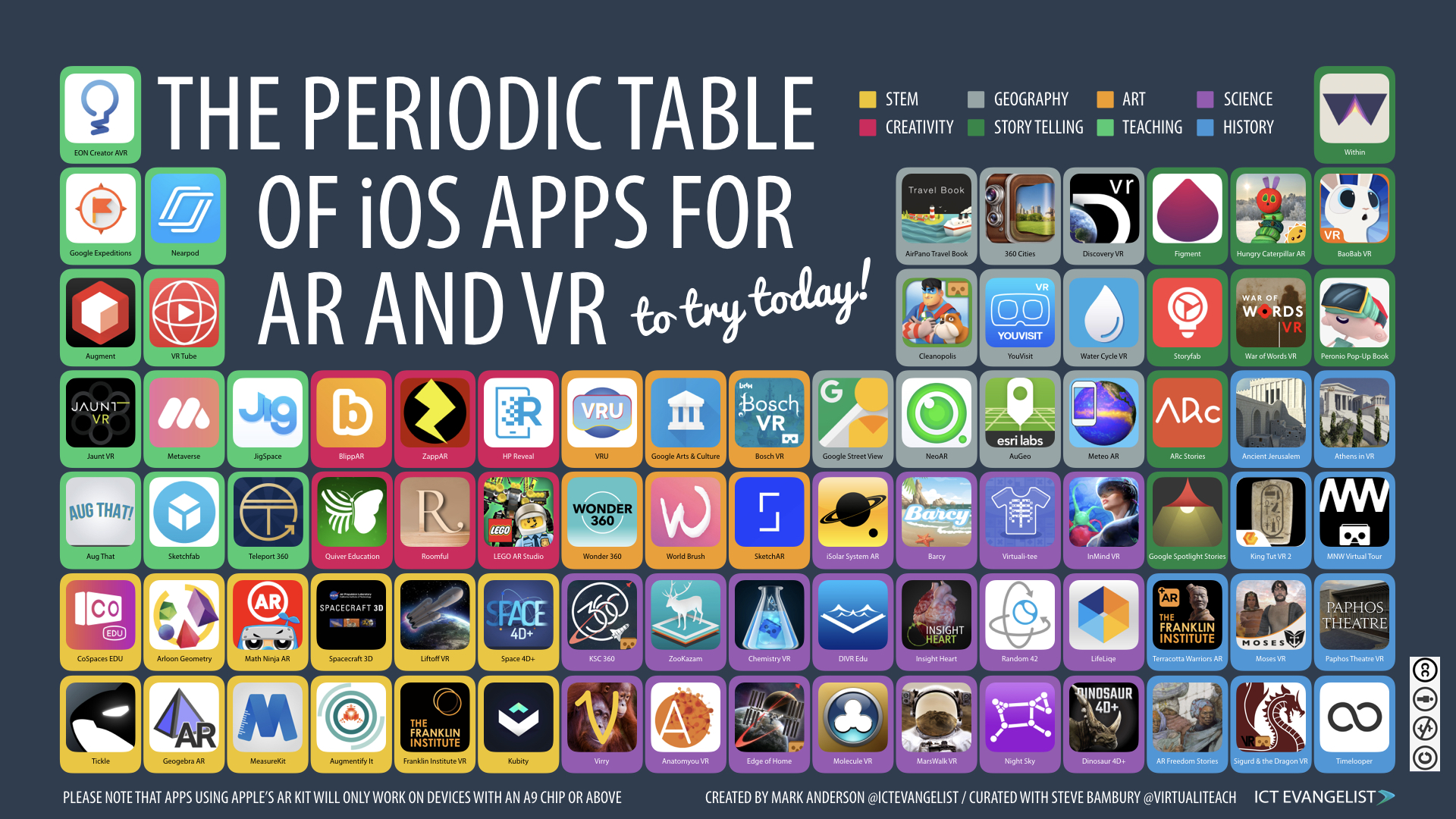
Growing up, the only time I had ever encountered virtual reality was at a pop-up event at the mall, but here in the College of Education at NCSU, virtual reality is a normality. With weekly VR events in METRC, VR sets are so accessible. After playing with augmented reality and virtual reality in ECI 201, I am very eager to incorporate both into my classroom.
I found the merge cubes to be a really cost-efficient and beneficial way to incorporate AR in the classroom. Although I have no intention — and do not expect myself to ever teach it — I think the merge cubes could be really beneficial in an anatomy classroom. Being able to see a 3D model of the brain, heart, and other organs was really enlightening and made a printed diagram useless in comparison. I also found the Google Expeditions software to be really attainable and informative. I explored all over Manhattan, went to the Seven Wonders of the World, toured Pennsylvania State University, Fordham University, and Notre Dame University. Additionally, the day we spent in the D.H. Hill VR Studio was really beneficial in terms of showcasing other, more advanced virtual reality technologies. My favorite technology was Google Earth because I was able to go to the street my apartment in Florence was on this summer when I studied abroad. I was able to walk from my apartment to the coffee place I frequented, and then to my classroom building. Although it wasn’t the same as truly being there, fully immersed in the culture, it did feel relatively real.

In all honesty, I was really turned off by the idea of virtual reality from the start because I figured it wasn’t feasible given the cost. I am pleasantly surprised to say that I am very interested in using virtual reality and augmented reality in my elementary classroom. However, I do want to make sure that I use it to complement learning and other experiences, rather than use it as a replacement. Although the possibilities are endless in terms of where students can ‘travel’ using VR, I don’t want to overlook all of the amazing places here in Wake County and in the Triangle area that can enhance learning in a way that virtual reality cannot. With that being said, I have done some research regarding ways to incorporate VR and AR in the classroom, without letting it become the driving force of instruction.
This video from a CBS news clip showcases how a middle school classroom in Manhattan is using Google Expedition to take field trips where buses have never gone before! I love this idea of using something as simple as a cardboard box to take my students to places no plane, train, or automobile could go. I also love the fact that this would only cost $15 for one. Ideally, I would like to invest in a better quality headset, however, given my intended age group — 7-9-year-olds — I don’t think it would be necessary for me to invest in a couple of hundred dollar piece of equipment. I think buying a dozen or so of the Google Cardboards could be a really feasible way to showcase the world to my students. I think this video below truly encompasses the possibilities Google Cardboard could have in an elementary classroom!
As awesome as it would be to actually get headsets/cardboard to further enhance the VR/AR experience, I think there are a lot of other unique resources that require less equipment. There are tons of applications that can be downloaded on classroom iPads that would also allow for students to take this kind of learning home with them. Check out the picture below that showcases several of these AR/VR apps!

The periodic table is so easy to breakdown given the color coordination between subject use. I definitely plan to refer back to this table when I begin planning lessons and have access to classroom iPads.
Because this technology is so new and unheard of by many teachers, I wasn’t able to find a ton of lesson plan ideas and activities to incorporate in the classroom. However, with that being said, because I have this knowledge, I can develop and implement various VR/AR activities into my classroom and inspire other educators to incorporate this technology into their classrooms. I was able to find some lesson ideas on classvr.com, but wasn’t entirely impressed or inspired by any of them. I am hoping as I gain more experience with VR technology, I will have a better grasp of how exactly to incorporate it into the classroom. Right now, I just see it as a way to take field trips from inside the classroom, but I know it has so much more potential than just that. I am hopeful that if I continue experimenting with VR, reading what current educators are doing with it, and brainstorming ideas, that I will be able to successfully implement VR technology in my elementary classroom.
This video below does an excellent job discussing the potential VR will have in classrooms around the world — make sure to check it out!